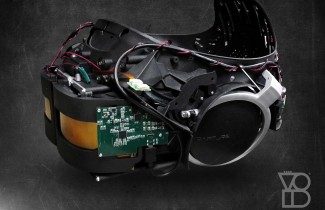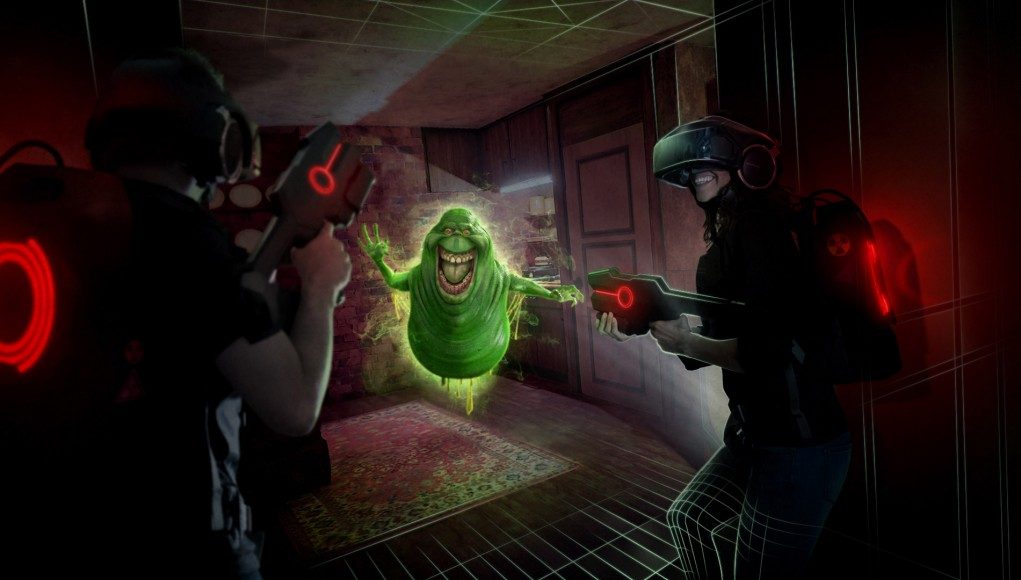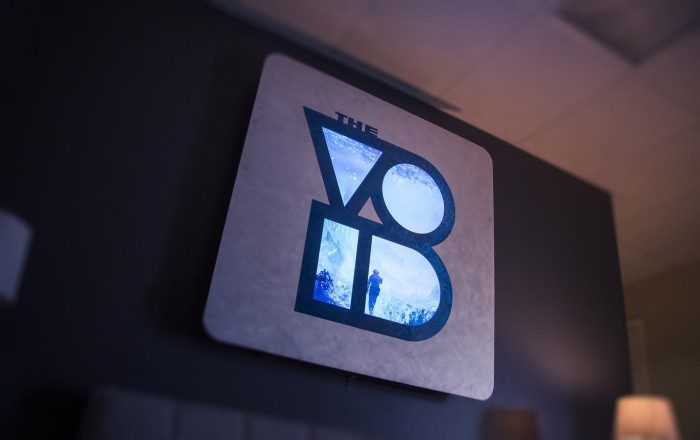What Success Means for a VR Ride-experience
The success of Ghostbusters: Dimension probably has something to do with its ‘4D’ components (e.g., the Slimer-cued mist, mock-rickety platforms, the vibrating vest). It probably has something to do with the Ghostbusters property and iconography, too. But neither would matter if not for (and both are bolstered by) the user engagement prompted by walking around in and interfacing with a semi-real virtual space.
What I’m trying to say is that lowering my visor and being foisted into Dimension convinced me, my brain, that I was in a novel, ‘dangerous,’ attention-demanding environment. After its fifteen minute or so duration, Dimension erased any gripes I had about the wait time before entering the experience and the superficiality of a celebrity wax museum. My awareness was unusually heightened. I was conscious, present, immersed in my mélange of realities like I hadn’t been before partaking.

Immersed and present do not here mean unaware of the virtual and digital character of what I was seeing. They mean that I was complexly aware of my environments, my bodies, the doubling of thought that necessarily occurred between my visual output’s insistence on my existence in Dimension and the rest of my brain’s knowledge of my simultaneous existence in a building in Times Square.
The term heterotopia comes to mind. Further: the parity and disparity between my tactile sensations as felt when conditioned by the VR headset’s visuals and as felt when conditioned by my deliberately testing the walls and floors and objects to ascertain how and if digital objects, or the real objects representing digital objects, felt. Sound, too: when my CNET pals spoke, I heard them first aloud and then, milliseconds later, through my headsets earphones. And so on: it is apparent that these dual realities spiral, bend inward and outward and imbricate.
“Hyper”: Over, Above, Beyond, Super; and “Reality”: This, That, Here, There.
“Hyper-reality,” then. The nomenclature, which I initially thought buzz-wordy, silly and also sort of inevitable, befits the experience of Ghostbusters: Dimension, or it does if one is willing to understand “realness” as a measure of attentive mental engagement and interrogation of one’s sensorial percepts, and “hyper-reality” as a state in which a subject develops and deploys an augmented awareness of reality’s contingency and persistent duality (and tri-ality, and so on).
Dimension woke me to my feet’s positioning, my body’s stance, my simultaneous interactions with environments real and virtual. It prompted me to question them. It prompted me to consider the value of an escapism that refreshes and complicates my perspective(s) of reality. It prompted me to think and feel, consider and reconsider, with special vigor. If that is not quite an end in and of itself, it is an opening onto other thoughts, different worlds, other virtuals, different reals.
So, would I go again? I would genuinely enjoy experimenting with the experience; I want to replay it. Undoubtedly this sort of entertainment has promise and, in all likelihood, a future. Intentionally or not, it made me more aware of my surroundings and makes me feel more aware generally. All that said, it’s difficult for me to imagine myself paying $50 for a combo Tussaud’s and Dimension experience or recommending that any friends pay that much who aren’t either, shall we say, “well-off” or die-hard VR fans. But then, this is New York, and Madame Tussauds is in Times Square; one imagines that tourists with families and disposable income allocated to their time visiting will be willing to pay and, moreover, will feel that their money was well-spent.








